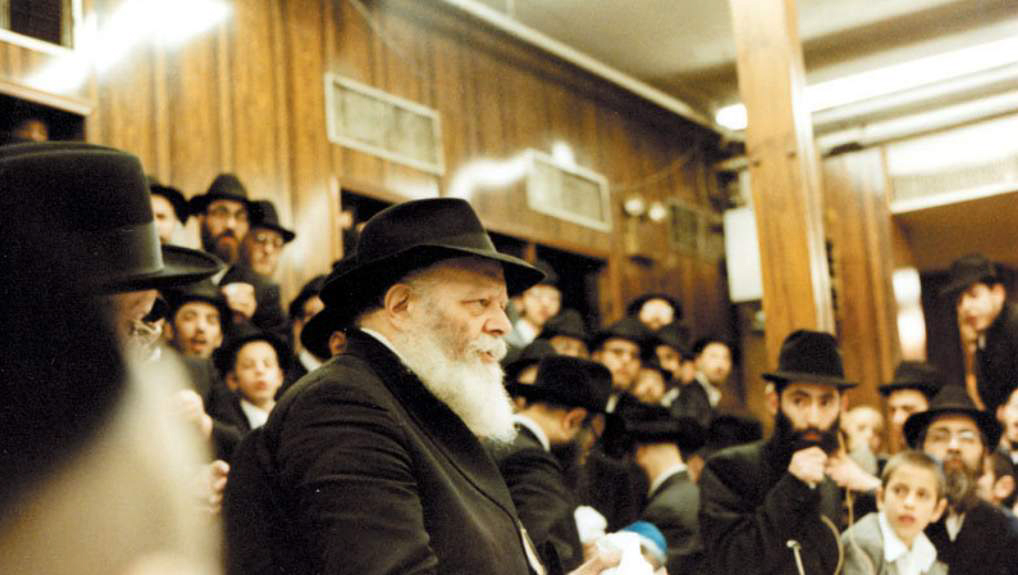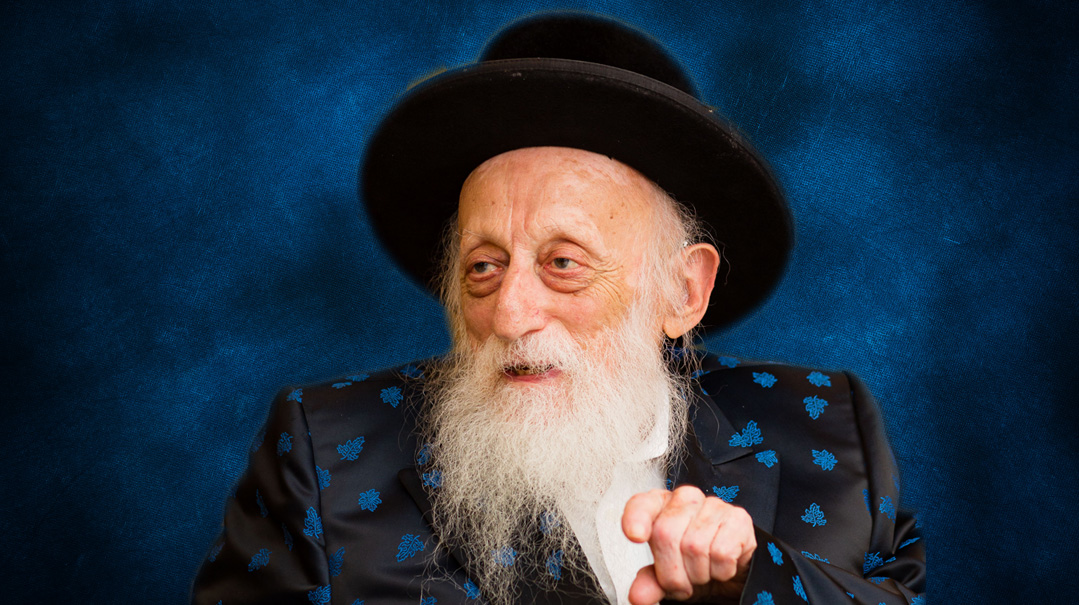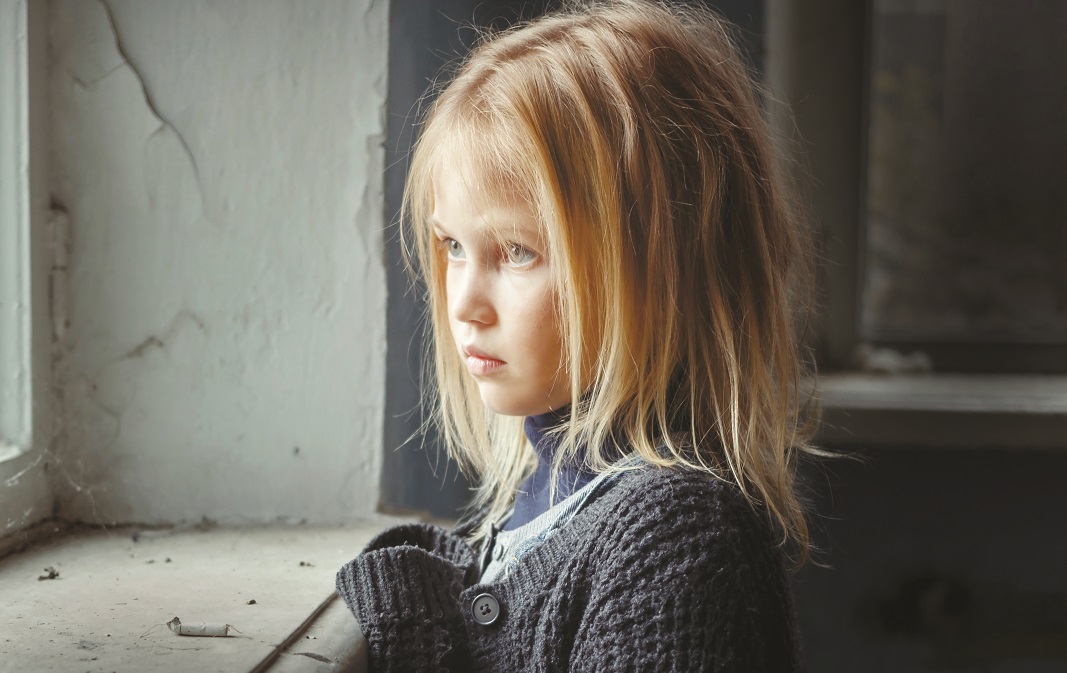Mountains and Giants

Away from the demands of the city, free from the restraints of their usual grueling schedules, closer to the sun, sky, or sea, our gedolim never take vacation from their true callings. In a special collection of memories, vacationers share their privileged glimpses of Torah giants in the relaxed summer settings of the mountains and seaside
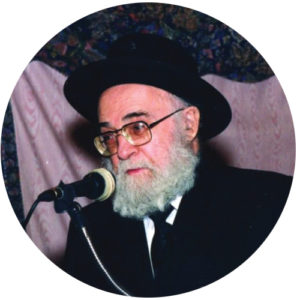
Holy Mixed Multitude
By One of the Boys
The small one-car garage that was used as a shul reverberated with many accents but with one voice
Wagon Wheel, a collection of about 20 bungalows (one-bedroom units with those extra-wide old hotel beds and the little refrigerators with a tiny freezer section inside) was the idyllic corner of the Catskills where my childhood memories of summer were formed. Located just down the road from Camp Morris (the summer home of Yeshivah Rabbi Chaim Berlin, which today is a sprawling city of its own but then was just an old hotel building housing the yeshivah and some staff) and a mile or two out of Woodridge where the famed Kamenitz Yeshivah was located, Wagon Wheel hosted an eclectic mix of European Holocaust survivors and American-born yeshivah graduates.
We kids had no day camp or organized activities, but we were never bored. The pool was always open and there were plenty of grasshoppers to catch and put in old baby-food jars. We would pick blueberries from the wild bushes near the woods and our mothers would bake them in to pies to be shared with the neighbors at the gala Shabbos Nachamu kiddush.
Up the road there was Steve’s Dude Ranch, which included a small petting zoo and horse rides on the trails cut through the woods near our colony. Steve’s father-in-law, Eli, came from the same city in Poland as my father and we would often take Shabbos walks up to “the farm” to say hello. Steve was an accomplished baal tefillah and would ride into town on his tall white horse to daven Minchah-Maariv in the Woodridge shul. We would surreptitiously pocket the sugar cubes our mother kept on hand to serve our zeide tea when he would visit (remember how it was held between the teeth as one sipped the hot tea?), and feed Steve’s horse the cubes — which he would lick up happily from our outstretched palms.
Every evening we would turn to watch as the nightly hay-ride wended its down the country road past our colony. Invariably, the various camp groups out for some fun would spot our yarmulkes and launch into a friendly rendition of “Havah Nagilah”. Only years later did I realize that these were all secular Jewish camps with either modern Hebrew or Indian-sounding names. The socialist Arbeiter Rung and other organized ism’s had youth programs all over the country. The generation that would be sacrificed in the secular American melting pot still identified somewhat with their heritage in those waning years of the 1960s, but before long their camps and schools and temples went the way of their parents’ mesorah. All we saw, though, were kids having fun and we would wave at the passing wagon in acknowledgement of their token Hebrew song.
The manager of Wagon Wheel was the nonagenarian Mrs. Kagan. She lived year-round in Woodridge and during the summer did all the shopping for the families in her colony. Her 1940s vintage Buick never went faster than 20 miles an hour but it was as reliable as its owner and an unforgettable part of the Wagon Wheel experience.
The Alte Mirrers, who included Rav Noach Feldman (the famed sofer), Rav Tuvia Goldstein (Rosh Yeshivas Emek Halacha), Rav Aharon Bokow (rav in Brighton Beach) and the well-known Boro Park rabbinic personality Rav Abba Karmel, blended perfectly with Rav Eliyahu Rominek (rav in Laurelton) and Rav Eli Kaminsky — both talmidim of Rav Hutner; and Rav Zev Altusky, Rav Avraham Berman, and Rav Solomon Drillman.
The beloved Rosenbaum clan of the East Side provided plenty of color, with Lenny and Malka acting as the glue that bound all the other families together in that special attachment known as “bungalow friends.” To this day, a trip to the mountains is not complete without a stop at Moshe Rosenbaum’s iconic Woodbourne Judaica Center where we renew old ties and reminisce about summers gone by.
The small one-car garage that was used as a shul reverberated with many accents but with one voice. Everyone was respected and all took part in the shiurim and davening. A special treat was when Chazzan Fastag would go to the amud… I can’t tell you if he davened Ashkenaz or Sefard. It certainly didn’t matter.
Once a summer the revered Mirrer mashgiach of Brooklyn, Rav Hersch Feldman, would come for Shabbos to his brother Rav Noach. On Shabbos afternoon he would say a shmuess on our punchball field and we boys would go from bungalow to bungalow to borrow the kitchen chairs so that the crowd of bochurim who would come from Camp Morris would have where to sit.
I had a kevius every Friday inspecting the eiruv with Rav Tuvia Goldstein, a renowned posek and mekurav of Rav Moshe Feinstein. I held the hammer and nails and fishing line and did the repairs as he pointed out what was needed. Today, more than 50 years later, as I take my sons and grandsons with me on Fridays to check the eiruv at our summer place, the voice of Rav Tuvia instructing me to fulfill his particular stringencies still rings in my ears.
There were two-coin washing machines plus a deep sink where I remember my mother using her vash breitel to scrub the grass stains out of our clothes. No dryer, just a maze of clotheslines where we played hide-and-seek among the array of hanging sheets.
There were no private phones and no one was addicted to instant knowledge of the news. The single public phone in the middle of the colony seldom rang. And when it did, we kids would race to answer it for the fun of being allowed to use the PA system in the main house to announce “Attention alle mentschen: Telephone call for Mrs. Rosenbaum, Mrs. Rosenbaum you have a phone call….”
There is one lingering memory, though, of when we did in fact want to hear the news.
It was Sunday of Labor Day weekend in 1970, the last day of the season. People would be leaving the next day and some had already said their goodbyes.
Suddenly, a snippet of news infiltrated our remote enclave. There had been a hijacking. No, multiple hijackings. Arab terrorists, hostages. And then the shocker: Rav Yitzchok Hutner and his children Rav Yonason and Rebbetzin Bruria David were being held captive. And with them was our own Yankel Drillman (today rosh yeshivah of Yeshiva Bais Yosef in Flatbush), son of Rabbi and Mrs. Drillman, now a prisoner of murderous Arab terrorists.
I tagged along as some men and older boys headed over to Camp Morris to hear what was happening, but all we found was a ghost town. The yeshivah and everyone affiliated with it had headed back home as soon as the first reports came in.
We returned to Wagon Wheel and the adults decided that our place was in the shul. We all headed that way and stopped as we got close. Heartrending sobs emanated from within. Reverently, we opened the little door to find Rav Eli Kaminsky alone at the amud, his tears flowing freely onto the Tehillim in front of him. We all joined in.
It would be a heart-stopping couple of weeks as all of Klal Yisrael joined in davening for the hostages. Yet, when the good news finally broke that the hostages were safe and would be home for Rosh Hashanah, I thought to myself how I knew it would turn out all right as soon as I heard the tefillos emanating from that little garage shul in Wagon Wheel.
(Originally featured in Mishpacha, Issue 773)
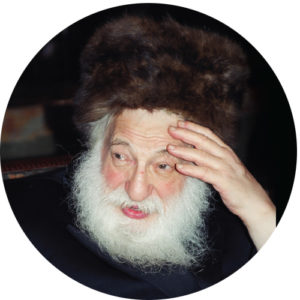
Pennies for the Rebbe’s Pushke
The Lipschutz Sisters
The Rosen’s residents felt like the luckiest people on the planet, meriting to see the Skulener Rebbe up close in an enchanted setting
Some bungalow colonies offer big fancy dwellings, a professional day camp, and a huge pool. Rosen’s Bungalow Colony had none of that when we were growing up (we actually swam in a lake), yet we Rosen’s residents felt like the luckiest people on the planet.
When we were children, our family spent every summer at Rosen’s, where we had the zechus of soaking up the sweetness, kedushah, and radiance of the Skulener Rebbe, Rav Yisroel Avrohom Portugal ztz”l, who spent many summers there as well.
We’d play with our friends on Friday night in the crisp, fresh country air, huddled in sweaters on the wet grass, where we would keep track of the time so that we could get to shul in time to watch the Rebbe dance Lecha Dodi. He would be surrounded by all the little boys whose fathers had pushed them to the front, and when he would turn around at “Bo’ee Beshalom,” we could catch a precious glimpse of his radiant face. Today, as exhausted, overworked mothers, we still sing and dance Lecha Dodi with our children to the Skulener niggun.
The men would sing as they accompanied the Rebbe to his bungalow after davening — the little girls running alongside and the women stopping their conversation to behold and walk along from a respectful distance.
We remember bundling up and walking up the hill to the Rebbe’s bungalow Friday night after the soup to see the Rebbe’s tish (our mother’s chicken would have to wait). In the early days, it meant balancing precariously on the gate surrounding the bungalow colony. Later on, the Rebbetzin would magnanimously open her bungalow to us, and when the veiber shul was added, we would all squish ourselves onto chairs, tables, or benches and try to get a peek at the Rebbe’s face between all the shuckling men. (We remember the table collapsing when one of us insisted it could handle the additional weight. Our friend’s father said that a tish where a table or bench doesn’t break is not a tish.) Sometimes, we would knock on the mechitzah to alert the men standing in our way to please move. Startled, they would scurry to the side.
Our then-ten-year-old brother would sneak in with a few friends by the day suedah and enjoy a private tish with the Rebbe. One time the Rebbe composed a niggun and then had to leave the room, so he asked these young chassidim to remember it for him until he came back. Until today our brother cherishes the important role he played (to his dismay he doesn’t remember the niggun anymore).
Until today our father uses the Rebbe’s nusach for Hamotzi on Shabbos. “Baruch Atah Hashem — Oyum, oyum, oyyoyyum, oyoyoyoyum…” Oh, the palpable sweetness we felt when the Rebbe would say those words in his trademark nusach.
Every Motzaei Shabbos there would be the weekly deals we’d make with Mommy to be able to stay up late enough for the Rebbe’s Havdalah. We usually won because Tatty was on our side. Another great trick was to hide at the other end of the colony until it was Havdalah time.
We remember sitting at the day camp table in the field (no indoor bunkhouse for us — rainy days were spent in a kindly offered bungalow or in the smashed-down main house) and watching the Rebbe walk from his bungalow to the mikveh before davening. One of us, a teen counselor, walked over with her young charges one morning and proudly presented their tzedakah pushke filled with coins to donate to the Rebbe’s organization, Chesed L’Avraham. The Rebbe smiled, thanked her warmly, and bentshed them. Another year when she went to the Rebbe’s bungalow to give him the tzedakah pushke, he proceeded to relate a chassidic story about how the heavy pennies weighed down the mitzvah side on the Heavenly scale. The Rebbetzin and their eineklach stood nearby enjoying the story as well, helping to clarify the Rebbe’s somewhat unclear articulation when necessary.
The Rebbetzin was a wonderful presence in the colony, as were their children and grandchildren. One of us kids once gave her $1.73 maaser money from the profits she had made from her Shivah Asar B’Tammuz day camp, and the Rebbetzin was overjoyed.
As the huge tents went up and hundreds of mattresses emerged to fill them (we would pile them up, sit on the top one, and someone would push the stack from the back —what fun!), we knew that Shabbos Nachamu was on its way, commemorating the Rebbe’s release from the isolation cell of a Romanian prison.
Every year, our family went to the Rebbe with a kvittel before we went back to the city. To us, it felt like a zeide greeting his long-awaited grandchildren. And perhaps that’s why these memories will stay with us forever.
Zechuso yagein aleinu.
(Originally featured in Mishpacha, Issue 773)
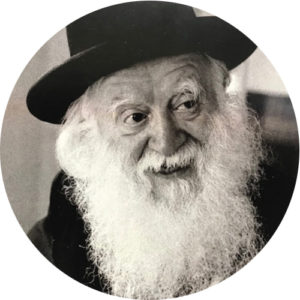
Every Moment a Lesson
As related by Rabbi Y.H. Steif to Riki Goldstein
Icommented to the Rosh Yeshivah that now he could get a little menuchah. He replied to me “I have menuchah, but what about the menuchah of the people who needed me?”
A day on vacation with my rosh yeshivah, the tzaddik Rav Yehuda Zev Segal of Manchester, was exactly the same as any regular day, besides for the fact that he took a walk. And even while he took his walk, he learned the whole time. So I have memories of strolling along in Bournemouth one bein hazmanim, breathing in the sea air, and learning daf yomi along with the Rosh Yeshivah. He carried a Gemara as he walked, and so did I. Another bein hazmanim, the learning seder for the walk was Sefer Kochvei Ohr, by Reb Itzele Blazer (Peterburger).
I accompanied the Rosh Yeshivah during bein hazmanim four times — twice to Semmering in Austria, and twice to Bournemouth, on the south coast of England. Bournemouth is a seaside resort town very popular with the Jewish community. In addition to kosher hotels and minyanim, there were many privately owned apartments. The Rosh Yeshivah used to travel with at least one bochur, sometimes more, and stay in one of those, benefitting from a change of air, and, officially, a rest.
Every moment was a lesson in Torah and mussar, starting when we wheeled the Rosh Yeshivah through the airport in a wheelchair (when we traveled to Austria) so he would be guarded from the immodest atmosphere.
The day’s schedule began early — as in yeshivah, so in bein hazmanim. The Rosh Yeshivah rose long before daybreak, since he was makpid to say Krias Shema with his tefillin at haneitz, all year round, “vacation” or not. It didn’t matter that in Manchester, sunrise can be as early as 4:40 a.m. By the time bein hazmanim came, it had already become later, and of course it moved during those two weeks too. I used to set the Rosh Yeshivah’s alarm clock, and I once pointed out that he could rise later than the time he had told me at the beginning of the vacation. No, he said, he didn’t want to. Another time, when the Rosh Yeshivah had gone to sleep very late, I set the alarm five minutes later. He didn’t say anything to me about it the entire day, but as he was walking to his bedroom that evening and I suggested he arise a few minutes later the next day, he shook a finger at me: “Vos meints dir? Ich hob nisht gezehn as di host getosht mein zeiger?” [Do you think I didn’t see that you moved my clock?] I didn’t try that again.
The Rosh Yeshivah davened very slowly, so he would always start ahead of the olam and join for Shemoneh Esreh. On vacation, we bochurim slept in an adjoining room, and the Rosh Yeshivah would wake us up. One day, one of the boys overslept. In the middle of davening, the Rosh Yeshivah signaled a question. I said, “I’ll go and wake him,” but the Rosh Yeshivah gestured “No, I will.” He walked into the room and took the boy’s pillow. And from then on, every morning when he woke us, that bochur’s pillow came off his bed, to make sure he didn’t sleep in.
The Rosh Yeshivah showed great love, care, and appreciation to us. I’ll give you an example. There was one summer in Bournemouth when the Rosh Yeshivah was post-surgery and very weak. He didn’t feel able to go out to join the minyan in the evenings, so he davened Minchah and Maariv in the house where we were staying. He asked me to stay with him, as he wasn’t feeling well and didn’t want to be alone. Then, one day, someone arranged a swimming session. “You go,” he told me. I didn’t want to leave him. But he insisted and made sure I took the opportunity to swim.
As is well known, the Rosh Yeshivah was removed from the pleasures of this world, and ate exactly the same food each day. Breakfast was porridge (oatmeal). I once added some sugar when I made it, but the Rosh Yeshivah asked me not to do that again.
During the morning, we sometimes learned with the Rosh Yeshivah. The mornings were when he got a bit of menuchah, because from lunchtime and on, once it was morning in America, the phone began to ring and didn’t stop until he went to sleep. Still, the Rosh Yeshivah’s instructions to us were clear: “Every phone call that comes in, you give to me.” It was just a couple of weeks a year when he was supposed to have some rest, but he never took a rest from being there for people.
The Rosh Yeshivah listened to every caller, advised and offered brachos, sometimes speaking on the phone for 45 minutes to one person. And when he finished, still holding the phone, he continued learning with us, continuing from the very word where we’d stopped before the call, as if we had not stopped at all. We often learned daf yomi and Mishnah Berurah.
Once, while in Semmering, we traveled to Vienna for a chasunah and were away for 24 hours. Most people didn’t know where to reach the Rosh Yeshivah, so there were only two phone calls during that day. I commented to the Rosh Yeshivah that now he could get a little menuchah. He replied to me, “I have menuchah, but what about the menuchah of the people who needed me?”
One night, we were learning and then stopped to eat supper. The Rosh Yeshivah said that we would continue later. But after supper and many phone calls it was very late at night. Nevertheless, the Rosh Yeshivah said to us, “Let’s learn. I’m not sure if I said bli neder.” So we learned another few minutes.
The memories of time spent with the tzaddik are reservoirs of pleasure and uplift. I’m ever grateful I had the privilege and opportunity.
Zechuso yagein aleinu.
(Originally featured in Mishpacha, Issue 773)
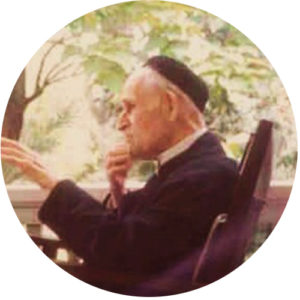
Everyone’s Invited to Join
By Rabbi B.Z. Halberstam
Sometimes we were joined by Harvard professors, sometimes rabbanim, and always by the various talmidim whose idea of vacation was to spend a few days learning with their rebbi
The small, mountaintop village of Tannersville, N.Y. has been a well-known destination of gedolei Yisrael for over a century. In the years prior to World War II, many gedolim, including Rav Elchonon Wasserman Hy”d and Rav Boruch Ber Leibowitz ztz”l, were recipients of the legendary hospitality of Mrs. Annie Golding, who hosted these Torah giants in her home when they needed rest during their fundraising trips to the United States.
Most famously, the Tannersville Jewish community is still associated with the Breuer’s kehillah (K’hal Adath Jeshurun) of Washington Heights. Soon after arriving in the United States, Rav Yosef Breuer ztz”l, the rav of KAJ, began summering in Tannersville with his family and other community members. As a young boy, the experience of seeing Rav Breuer each summer left an indelible impression upon me. Rav Breuer, despite his status and age, sat in a seat in the middle of the shul — as a “regular” balabos (if one can dare to call him that). Notwithstanding his revered status in the community and in the world at large, he deferred to the (young) man serving as the rabbi of the shul and demonstrated to all what it meant to respect a rav and the communal structure.
Each Shabbos after davening, my father took all of us over to wish Rav Breuer “Good Shabbos.” Although he was already quite frail and his sight was failing, he would take each of our hands and bentsch us. In one memorable encounter, my father introduced my younger sisters and Rav Breuer benched them with a life of “Towrah, chuppah and maasim towvim” (with his distinctive German pronunciation). He then underscored his point: “Ich hab gezahgt —l’Towrah, nisht l’ben Towrah!” (Meaning: “I said [the girls should merit themselves to grow in] Torah, not only [to merit to marry] a Torah scholar!”) Rav Breuer also taught us how a gadol interacts with family, and the love and devotion of his children and grandchildren was obvious. I remember Rav Breuer sitting on the porch of his children’s house every Sunday morning watching us play softball in the backyard.
For me, Tannersville is most associated with the constant presence, for over 40 years, of Rav Hershel Schachter shlita, rosh yeshivah and rosh kollel of Yeshivas Rabbeinu Yitzchak Elchanan of Yeshiva University. To this day, Rav Schachter is an extraordinary model of limud and harbatzas Torah in Tannersville. For many years, each day after davening, Rav Schachter learned Mishnayos with his own children and the many kids who wanted to join in. Imagine — a Mishnayos class with one of the greatest poskim of the dor! And all with Rav Schachter’s trademark ne’imus and simplicity — as if this were the most enjoyable thing Rav Schachter could be learning.
Learning with Rav Schachter is an experience of “Kol dichfin yeisei v’yeichal” — anyone who wants is invited to drink from the waters of the Torah. Young and old, the veteran talmidei chachamim and the young children — all are welcomed. We began learning with Rav Schachter when we were little kids, and we continued as teenagers and adults. The group expanded and shrank, depending on who was in town. Sometimes we were joined by Harvard professors, sometimes rabbanim, and always by the various talmidim whose idea of vacation was to leave the city to spend a few days learning with their rebbi. As young men, we were introduced to the complex sh’eilos that would cross Rav Schachter’s desk. His responsibility as a posek required that questions could not be ignored even when he was in Tannersville, and we heard about the serious (and the not so serious) questions that demanded his attention.
My father sheyichyeh used to express his hakaras hatov to Rav Schachter by gifting him seforim. Knowing Rav Schachter’s love of sh’eilos u’teshuvos, he bought Rav Schachter many teshuvah seforim from Galicianer and Hungarian poskim (such as the Maharsham and the Minchas Yitzchak). I recall my father’s amazement one time when Rav Schachter quoted teshuvos from these authors, from all four sections of the Shulchan Aruch, only a week after he was given the seforim! Apparently, while the rest of us read books to relax, Rav Schachter would take a break from his regular learning sedorim by absorbing hundreds of teshuvos — which later would find their way into his shiurim and piskei halachah.
Every so often we would convince Rav Schachter that he (well, really we!) needed to spend some time hiking for health reasons. We would then spend a few enjoyable hours climbing leafy trails up the mountain, while listening to Torah thoughts, stories of gedolei Yisrael, and our rebbi’s thoughts about hashkafah and life. Watching Rav Schachter raise his children (today all talmidei chachamim and communal leaders in their respective communities), we learned the “fifth chelek of Shulchan Aruch” — something we could not have learned in the more formal yeshivah setting. It is these experiences that molded us and influenced our thinking for a lifetime.
Though my summers in Tannersville learning with Rav Schachter have long passed, those years are not just a memory. They continue each summer, in the quiet streets of a small Catskill mountain village. If you happen to be in Tannersville, walk by the quaint house on Park Lane and watch Rav Schachter sitting on the porch, usually with others and sometimes by himself, absorbed in learning. And if you are brave, pull up a chair and experience eternity.
(Originally featured in Mishpacha, Issue 773)
Oops! We could not locate your form.







